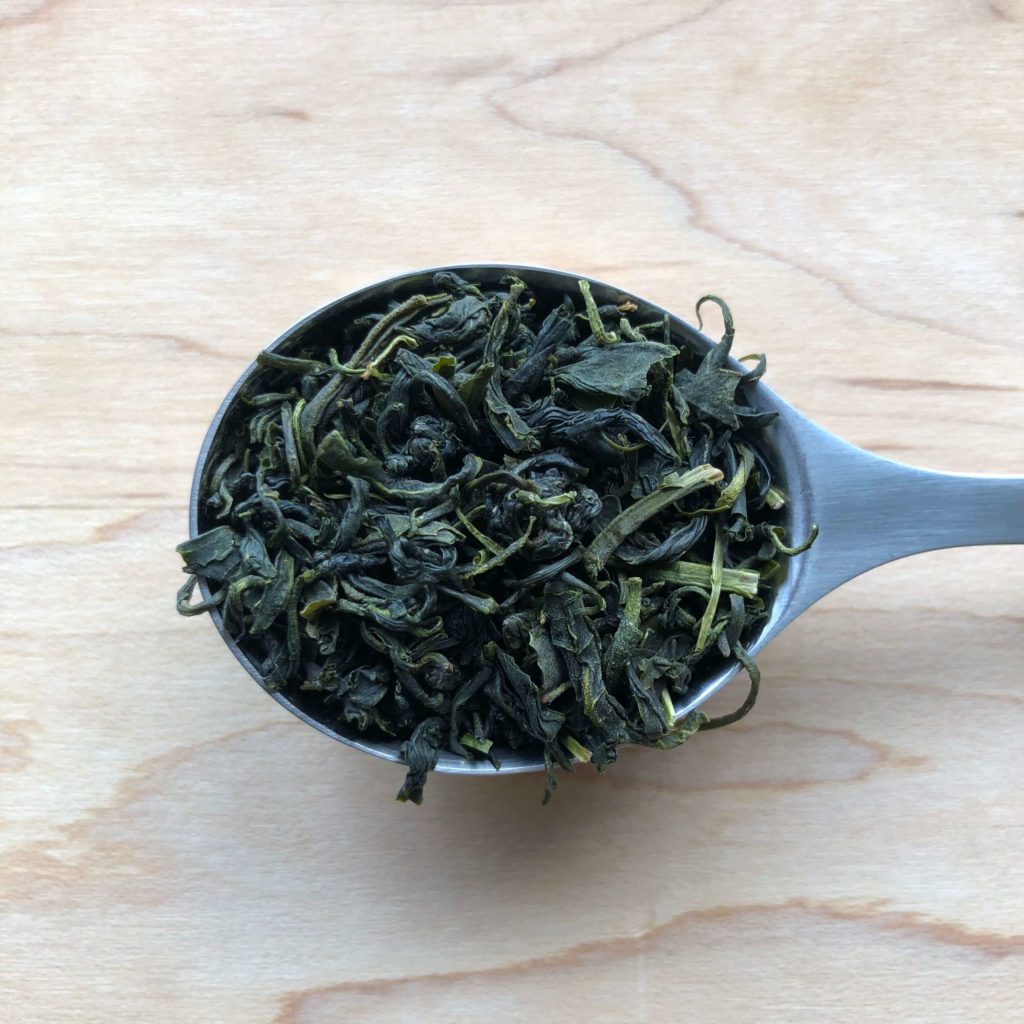
Over the years, I’ve found one of the best ways to learn about tea is through vertical and horizontal tastings. I always like tasting tea from the same region or producer and comparing them!
Description: “Leaning at first on the intensive chlorophyll taste associated with Japanese teas (fresh cut grass and seaweed broth), aromas then move towards green vegetables notes (fiddleheads) with a hint of lemongrass in the finish.”
Instructions: 250ml | 1 tsp | 85°C/185° | 3 – 4 min
Review: I learned about vertical and horizontal tastings through tea, however, it seems more commonly used for wines. In relation to wine, vertical tasting refers to tasting the same winery and wine type but different vintages (the year the grapes were picked), whereas horizontal tasting is the same vintage but different wineries. Various additional criteria can be included such as region or wine type to further understand a specific winery. I’ve always found this type of tastings extremely informative. So, when I saw two Korean teas from the same producer, I knew I had to try them!

This review will be part one of two of a horizonal tasting of a Korean Yabukita green tea and a black tea from Osulloc Tea Farms. The teas were picked in April 2020, days apart from one another, on the island of Jeju which was formed by volcanic eruptions. I was interested in tasting teas from the island after I learned about it in Soocha Tea’s Korean Tea talk a few years ago.
The tea had a dark forest green colour with some shorter and longer leaves that had a slight curl. The dry leaves had a nutty and pine tree smell. Once infused, the leaves were small broken pieces with a vegetal and grassy smell.

The tea had a dark forest green colour with some shorter and longer leaves that had a slight curl. The dry leaves had a nutty and pine tree smell. Once infused, the leaves were small broken pieces with a vegetal and grassy smell.
During a 3 minute tasting, the liquor was a clear pale yellow with small particles at the bottom of the cup. The taste was sweet, savoury, umami, and mineral with some astringency at the tail end of the sip. The tea was reminiscent of Kabuse Sencha, a Japanese shaded sencha. When cooled, more vegetal flavours developed with dryness on the tip of the tongue. In comparison, a 4 minute infusion brought forward a stronger roasted nutty and vegetal taste. However, there was less umami in the flavour profile.

At the time of reviewing the tea, I had forgotten that teas from Jeju Island were steamed and pan-fried nor that it was a Yabukita cultivar which is the most common cultivar used in Japan. Therefore, I was extremely confused when the tea tasted like a mixture of Kabuse Sencha from Japan and a Chinese pan-fried Dragonwell! Since I try not to read too much about a tea before I review it, it was a strange sensation as the tea was not at all like what I expected. Reading the Camellia Sinensis website after, it noted that the green tea was “produced in Japanese style with a quick steaming of the leaves, a longer drying period in electric tumblers adds a little Chinese edge to its flavour profile.”
Overall, this tea was an adventure and it really shows how terroir, cultivator, and processing can play such a huge part in the final outcome of the tea. I am glad I didn’t read more into the tea before reviewing it since I may have gone in with preconceived notions. This way, I had to figure out the tea on my own (3.5/5 rating)!
- Type: Green tea
- Origin: Jeju Island, South Korea
- Caffeine: 58 mg per cup
- Ingredients: Green tea
- Company: Camellia Sinensis
The question of the post: Have you ever had Korean tea before?

3 comments
Great post! looking forward to part 2 and more reviews like this from you.
So glad you enjoyed this type of review! I find them very fun as you learn and explore at the same time!
[…] Review: As stated last week, I wanted to conduct a comparative tasting of two Korean Yabukita teas, a green and a black tea, both picked in April 2020. The producer, Osulloc Tea Farms, is located on Jeju Island, which was formed by volcanic eruptions. I wanted to taste these two teas side-by-side because they shared many similarities such as region, cultivar, picking season, and producer. One of the largest difference is how the teas were produced. […]